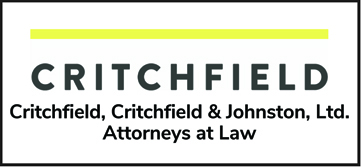Sponsored
IRA beneficiaries – what do they need to know about taking distributions?
By Ann E. Salek, Attorney at Law, Critchfield, Critchfield & Johnston, Ltd.
The SECURE Act was signed into law on Dec. 20, 2019. For those individuals who die after Dec. 31, 2019, the SECURE Act will affect many aspects of your retirement plans (IRAs, 401ks, etc).
Prior to the SECURE Act, most beneficiaries of an inherited IRA could opt to receive distributions from the IRA over their expected lifetime. The beneficiary must pay income tax on distributions from an IRA. Therefore, this “stretch” over their lifetime enabled the beneficiary to defer the taxable income over their life expectancy. In addition, the IRA could continue to grow over that time period as well.
However, the SECURE Act now requires the IRA distributions for most beneficiaries to be completed within 10 years after the IRA owner’s death. The result is that the income taxes get paid on those funds much sooner (10 years versus over a lifetime). In addition, the distributions will be much larger than if they were stretched over a lifetime, thereby possibly causing a beneficiary to be taxed in a much higher tax bracket.
Certain beneficiaries are not subject to the 10-year distribution rule. For example, minor beneficiaries may receive their IRA distributions based on life expectancy until they reach the age of majority. Disabled or chronically ill beneficiaries may receive their IRA distributions based on their life expectancies. Spousal beneficiaries may “roll over” the IRA to their own IRA allowing the surviving spouse to defer minimum distributions until they reach age 72, and then calculate their distributions based on their life expectancy.
If you have charitable inclinations, it is important to note that qualified charitable beneficiaries will continue to avoid paying income tax on the distributions from retirement plan benefits. Considering the more egregious SECURE Act tax consequences resulting to individual beneficiaries, the charitable beneficiary becomes much more attractive. IRA owners can direct their lifetime required minimum distributions directly to a charity to avoid paying income taxes on those lifetime distributions. In addition, the IRA owner can name a qualified charity as the death-time beneficiary of the IRA and that charity will receive the corpus of the funds in the IRA without paying income taxes as an individual beneficiary would have to pay.
It is always a good idea to stay updated on your beneficiary designations. However, now more than ever, you should review your current retirement plan and beneficiaries to understand the significant changes resulting from the SECURE Act.

Sponsored By
Critchfield, Critchfield & Johnston, Ltd.
Attorneys at Law
4996 Foote Road, Medina, OH 44256
330-723-6404 • www.ccj.com
Opinions and claims expressed above are those of the author and do not necessarily reflect those of ScripType Publishing.

